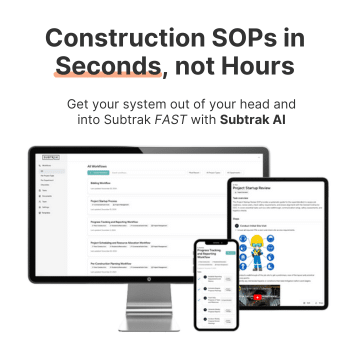Material Shortage Prevention for Insulation
The Material Shortage Prevention workflow provides insulation contractors with a reliable process for ensuring batts, spray foam, adhesives, and safety gear are on hand when needed. It includes forecasting demand, logging usage, confirming supplier orders, and monitoring deliveries. Managers review reports to anticipate shortages and optimize purchasing schedules. By standardizing this process, insulation companies protect profitability, improve efficiency, and reduce downtime. Clients benefit from confidence in consistent service delivery. Teams gain accountability with documented planning. With this workflow in place, insulation contractors can strengthen professionalism, improve efficiency, and deliver projects more reliably by proactively managing supply needs.
Review project scope and material requirements during kickoff
Break down material needs by phase and installation timeline
Confirm material lead times with suppliers early in the project
Set reorder points and minimum stock levels for high-use items
Use a material request system for field-to-office communication
Schedule material deliveries to align with project milestones
Track material usage against estimate or takeoff
Conduct weekly inventory checks on active job sites
Flag and reorder low stock or long-lead items proactively
Communicate delivery delays or substitutions to the field team
Maintain a buffer stock of critical materials when feasible
Log shortages or delays and analyze for recurring issues
Review supplier performance and lead times after each project
Use lessons learned to improve forecasting on future jobs
👈 Use this SOP template inside Subtrak
Edit with AI. Customize in seconds. Store and share all your SOPs and checklists in one place.
